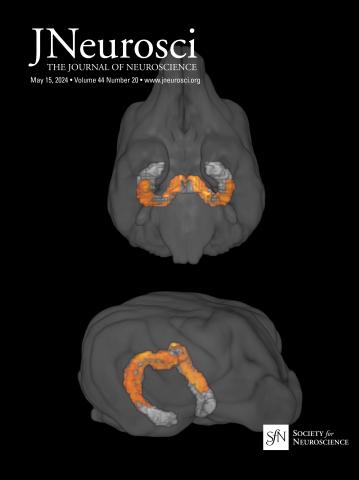The administration of ketamine is associated with dose-dependent stabilization of cortical dynamics in humans.
IF 4.4
2区 医学
Q1 NEUROSCIENCES
引用次数: 0
Abstract
During wakefulness, external stimuli elicit conscious experiences. In contrast, dreams and drug-induced dissociated states, are characterized by vivid internally generated conscious experiences and reduced ability to perceive external stimuli. Understanding the physiological distinctions between normal wakefulness and dissociated states may therefore disambiguate signatures of responsiveness to external stimuli from those that underlie conscious experience. The hypothesis that conscious experiences are associated with brain criticality has received considerable theoretical and experimental support. Consistent with this hypothesis, statistical signatures of criticality are similar in normal wakefulness and dissociative states but are abolished in dreamless sleep and under anesthesia. Thus, while statistical measures of criticality are associated with the ability to have conscious experience, they do not readily distinguish between perception of the external world from internally generated percepts. Here, we investigate distinct, dynamical, signatures of criticality during escalating ketamine doses in high-density EEG in human male volunteers. We show that during normal wakefulness, EEG is found at a critical point between damped and exploding oscillations. With increasing doses of ketamine, as dissociative symptoms intensify, activity is progressively stabilized - most prominently at higher frequencies. We also show that stabilization is a more reliable marker of the effects of ketamine than conventional measures such as power spectra. These findings suggest that stabilization of cortical dynamics correlates with decreased ability to respond to and perceive external stimuli rather than the ability to have conscious experiences per se. Altogether, these results suggest that combining statistical and dynamical criticality measures may distinguish wakefulness, dissociation, and unconsciousness.Significance Statement During wakefulness, external stimuli elicit sensory perceptions while during unconsciousness, perception is absent. Dissociated states of consciousness, including those induced by ketamine, feature internally generated experiences and, concomitantly, reduced responsiveness to stimuli. Both normal wakefulness and dissociated states have been linked to statistical criticality, a regime in which the brain operates at the transition between order and disorder. Here, we study a distinct notion of criticality - transition between stable and unstable oscillations and show that ketamine induces dose-dependent stabilization of normally critical brain dynamics. Thus, departure from dynamical criticality is associated with states of reduced responsiveness rather than unconsciousness. Combining statistical and dynamical criticality measures may better distinguish connected and dissociated states of consciousness.氯胺酮的施用与人类皮质动力学的剂量依赖性稳定有关。
在清醒时,外部刺激引起意识体验。相比之下,梦和药物引起的游离状态的特点是生动的内部产生的意识体验和减少感知外部刺激的能力。因此,理解正常清醒状态和游离状态之间的生理差异,可以消除对外部刺激的反应特征与那些构成意识经验的特征之间的歧义。意识体验与大脑临界性相关的假设已经得到了相当多的理论和实验支持。与这一假设一致,临界状态的统计特征在正常清醒和分离状态下是相似的,但在无梦睡眠和麻醉下被消除。因此,虽然临界性的统计测量与有意识经验的能力有关,但它们并不容易区分对外部世界的感知和内部产生的感知。在这里,我们研究明显的,动态的,临界的特征在不断升级氯胺酮剂量在高密度脑电图人类男性志愿者。我们发现,在正常清醒状态下,脑电图处于阻尼振荡和爆炸振荡之间的临界点。随着氯胺酮剂量的增加,随着分离症状的加剧,活动逐渐稳定-最显著的是在较高的频率。我们还表明,稳定是一个更可靠的标志,氯胺酮的影响比传统的措施,如功率谱。这些发现表明,皮层动力学的稳定与对外部刺激的反应和感知能力下降有关,而不是与有意识体验本身的能力下降有关。总之,这些结果表明,结合统计和动态临界度量可以区分清醒、分离和无意识。在清醒时,外部刺激引起感官知觉,而在无意识时,知觉缺失。意识的游离状态,包括氯胺酮引起的状态,以内部产生的体验为特征,同时,对刺激的反应减弱。正常的清醒状态和游离状态都与统计临界性有关,这是一种大脑在有序和无序之间过渡的状态。在这里,我们研究了一个不同的临界概念-稳定和不稳定振荡之间的过渡,并表明氯胺酮诱导正常临界脑动力学的剂量依赖性稳定。因此,脱离动态临界状态与反应能力降低而非无意识状态有关。结合统计和动态临界度量可以更好地区分连接和分离的意识状态。
本文章由计算机程序翻译,如有差异,请以英文原文为准。
求助全文
约1分钟内获得全文
求助全文
来源期刊

Journal of Neuroscience
医学-神经科学
CiteScore
9.30
自引率
3.80%
发文量
1164
审稿时长
12 months
期刊介绍:
JNeurosci (ISSN 0270-6474) is an official journal of the Society for Neuroscience. It is published weekly by the Society, fifty weeks a year, one volume a year. JNeurosci publishes papers on a broad range of topics of general interest to those working on the nervous system. Authors now have an Open Choice option for their published articles
 求助内容:
求助内容: 应助结果提醒方式:
应助结果提醒方式:


